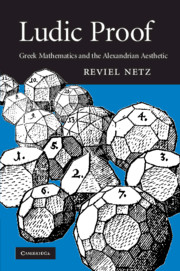2 - The telling of mathematics
Published online by Cambridge University Press: 29 July 2009
Summary
THE SPHERE AND CYLINDER: MOTIVATING THE DISCUSSION
The Stomachion lies at the edges of our knowledge of ancient mathematics, hardly figuring in any of the modern histories of mathematics. This may represent a more modern bias (the game it studies was called in antiquity “the box of Archimedes,” which suggests that Archimedes' treatment of it became widely known), but even so, no one would suggest this represents the core of Archimedes' fame. For this we have to turn to the Sphere and Cylinder. After all, there is the famous report by Cicero, according to which Archimedes chose those two figures for his tombstone – defining them as his crowning achievement. And one can easily see why. With all we have seen in the previous chapter concerning the fascination shown by Greek mathematicians towards the complex and the unwieldy, nothing could beat sheer elegance. And what elegance in this result! The cylinder (defined as having its height equal the diameter of its base) is one-and-a-half times the sphere it encloses. Exactly so – in other words, the two objects are like the harmonic notes of the fifth. And is not the sphere as elusive as the circle, with the added complexity of the third dimension? To compare the sphere with the simpler cylinder is to measure it, in a sense, and this result obtained by Archimedes is the closest that Greek mathematicians – or any other since – have ever come to squaring the circle.
- Type
- Chapter
- Information
- Ludic ProofGreek Mathematics and the Alexandrian Aesthetic, pp. 66 - 114Publisher: Cambridge University PressPrint publication year: 2009



